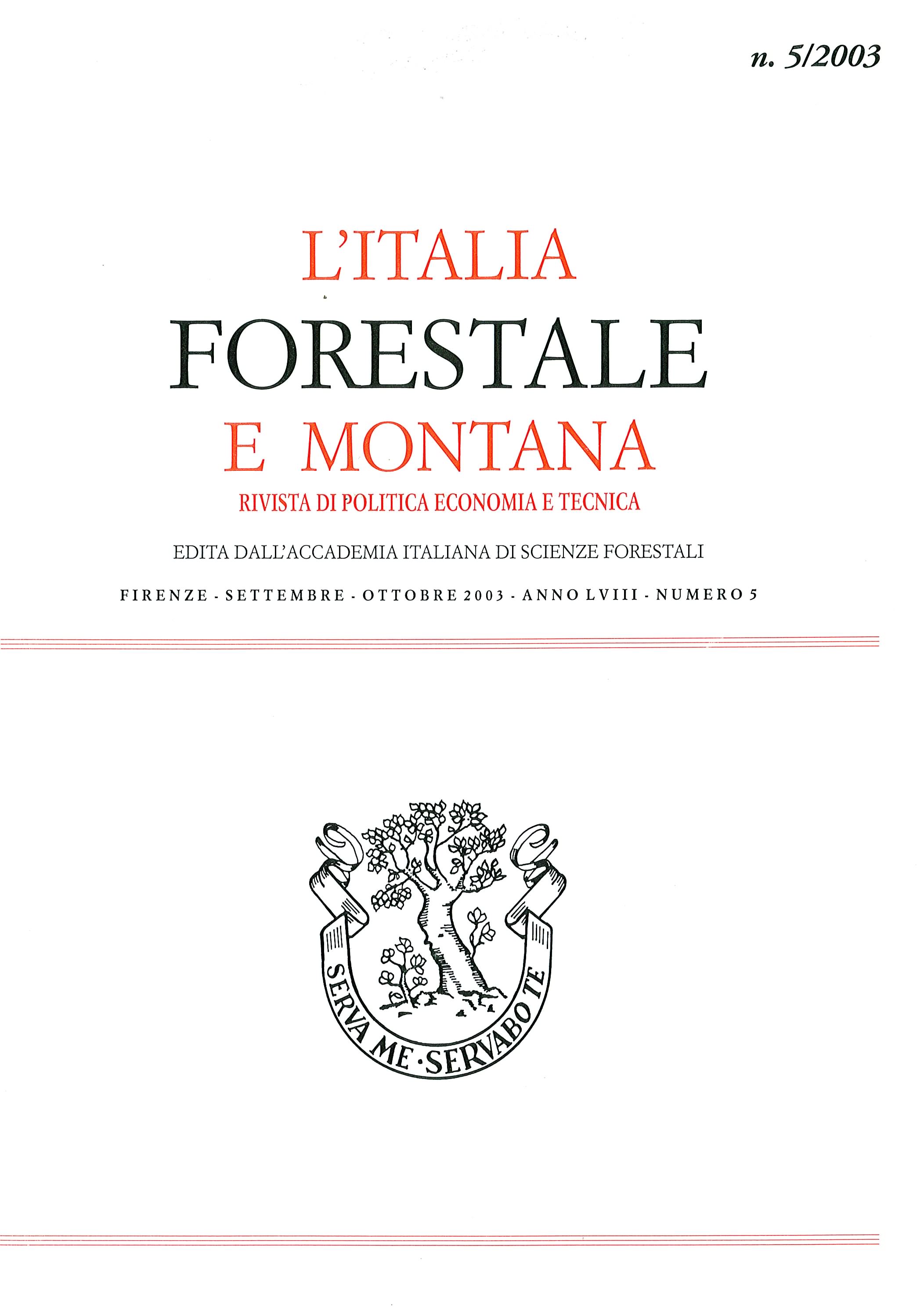Analysis of the development potentials of the biomass-energy chain: the Tuscan Region opportunity
Published 2003-10-31
Keywords
- economy,
- biomass-energy chain,
- Tuscan Region,
Copyright (c) 2013 Italian Journal of Forest and Mountain Environments

This work is licensed under a Creative Commons Attribution-NonCommercial 4.0 International License.
Abstract
Following the objectives fixed by the Kyoto environmental conference, the European Union and the Italian Government have promoted actions directed towards the development and spread of renewable energy resources. Agenda 2000 has indicated no food crops (and among these energy crops) as possible alternatives to be employed in setaside areas. Even the Tuscany Region Rural Development Plan (in compliance with the EU reg. 1257/99) includes (measure 8) the possibility of setting up plants for the production of biomass for energy purposes utilising poplars or other species. In the framework of regional policies, biomasses play an interesting role within the Tuscan Region Energy Plan. According to the plan, by the year 2010 agro-forestry biomasses should contribute to the regional production of electricity by 1.6%, corresponding to 92 MW. General public is now aware that green biomass represents a renewable resource that is widely available on the territory, and if utilised according to environmentally sustainable criteria, it allows for an economic development compatible with natural ecosystems. The importance of evaluating the development potentials of the biomass-energy sector issues from these premises and from considering the opportunities offered by new technologies both in terms of a wider range of available green combustibles (chips and pellets) and in terms of the grown capacity of enterprises in gathering and processing the products. The biomass-energy sector is based on the employment of industrial residues of silvicultural activities, residues coming from operations carried out on agricultural tree crops (vineyards, olive and fruit groves) and short rotation forestry (SRF) in marginal areas. Therefore we have individuated all the operations connected to the harvest of biomass, the processing in half-finished products (chips) and the production and marketing of finished products (pellets or energy). The methodology developed in the present paper was based both on territorial analyses carried out through GIS applications (for the evaluation of available resources) and on business analysis in order to define the most suitable firm typology for the collection and processing of the raw matter. The results emerging from the conjoint evaluation of the entrepreneurial structures and of resources available on the territory have led to the definition of «energy district» in which we can identify the quantity of resources sufficient to supply each local bio-energy network.

